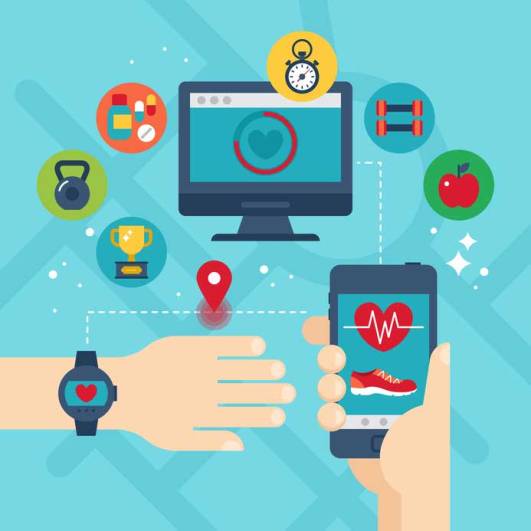Physiotherapy and video consultations – New assessments and injury management.

These are very worrying and strange times, for everyone.
I have been agonising over the past week about the options for continuing to offer Physiotherapy services in the current climate.
Ultimately, the combination of collective responsibility, social pressure and doing everything we can to halt the spread of this virus and help out our NHS colleagues on the front line made the decision easy.
During this unprecedented time, we all have had to adapt and find new ways to keep supporting your physical (and mental) health. The world can’t stop and now, more than ever exercise is so important.
I have now moved to all online voice only or video-call sessions via phone, facetime, skype or zoom.us app. This will continue for the short-term (I hope) and we will be able to seamlessly transition back to face-to-face and hands-on when we are able to do so safely.
I have moved all my current patients in treatment seamlessly over to video appointments where possible. But what about new assessments and acute injuries?
What can we accomplish in a new patient online session?
- Face-to-face detailed subjective injury history taking
- Full objective assessment including range of movement, strength tests and special tests
- Diagnosis of the injury
- Advice and anatomical description
- Provide realistic timeframes for management and recovery
- Provide recordable exercise prescription and self-mobility techniques
- Demonstrate taping techniques
- Goal setting for the next session
- Online exercise programming software integration

I am an experienced Physiotherapists and worked in A&E for four years as a musculoskeletal injuries specialist. I still work part-time for the NHS in a Consultant Physiotherapist role, predominantly running Orthopaedic triage clinics which means a lot of very quick assessments and decisions on care! I am also a qualified musculoskeletal Sonographer, Independent prescriber and practice injection therapy.
I thought it might be helpful to give two examples of remote sessions I have been involved with this week.
Case study 1 – 40 year-old fit and actively man was unfortunately stranded in France due to the COVID-19 outbreak. With limited equipment and self-isolating, he took up trail running. After a few runs, he missed a step and felt a sharp pull in the back of his leg. After the pain subsided he hobbled home and used the RICE (Rest Ice Compression Elevation) protocol. After a few days, he noticed some bruising at the back of the leg and then contacted me to organise a ‘zoom’ remote session. After a quick chat and subjective assessment, we moved on to an objective look at the injury. I was able to instruct him to perform some movements and tests including palpating. We were very quickly able to diagnose a likely grade 2 medial hamstring tear. After this we went through the anatomy of the injury, timescales for recovery, ‘do’s and do not’s’ and then recorded a comprehensive rehab plan for the next two weeks. The whole session lasted 30 minutes and we will follow-up in two weeks to progress and get him back to full activity ASAP! Knowledge and correct diagnosis is key!
Case study 2 – A 33 year-old yoga teacher injured her shoulder two weeks prior. We had a brief telephone call to ascertain what the injury might be and it sounded like she may have injured her rotator cuff and was now suffering from a shoulder impingement syndrome. This was restricting her full range of movement and causing pain at night, sleeping in the shoulder. The main thing was that she was unable to teach fully with the pain and modify her practice. We agreed that a zoom appointment would be beneficial to confirm the injury and advise on rehabilitation. We arranged a zoom consultation the next day. Again, with the visual assessment, it was clear that it was in fact her acromio-clavicular joint (ACJ) that was strained. This changed the advice that I would have given just over the phone. We were then able to discuss the injury fully, record a comprehensive and specifically tailored exercise plan including stretches, mobility and strength work in addition to demonstrating a taping technique to offload the joint and reduce the pain. We will follow-up progress in one-week.
I hope these two examples help explain how useful a video consultation can be and can help you avoid long-term damage, reduce pain levels and get you back to what you want to do sooner!
If you want to discuss if a video appointment is right for you, please contact me directly at emerson@xphysio.com and I will be happy to email or call you back for an initial free 15 minute chat and advice.
Self-pay rates are £40 initial consultation (£30 CrossFit members) and £30 follow-up (£25 CrossFit members).
Insurance companies are now fully supporting and covering these sessions to allow your rehabilitation to start, progress and continue.
Stay indoors and stay healthy!
Emerson
